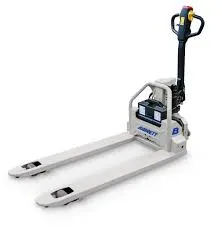


Fall Protection Devices Ensuring Safety in the Workplace
In many industries, particularly construction and manufacturing, the risk of falls is a significant concern. According to data from the Occupational Safety and Health Administration (OSHA), falls are among the leading causes of workplace injuries and fatalities. To combat this serious issue, various fall protection devices have been developed and implemented, making workplaces safer for employees. This article will explore the importance of fall protection devices, the types available, and best practices for their use.
Importance of Fall Protection
The adoption of fall protection devices is not merely a regulatory requirement but a fundamental aspect of workplace safety culture. Falls can lead to severe injuries, such as fractures, head trauma, and even death. Beyond the human cost, falls also contribute to substantial economic losses for businesses through medical costs, legal liabilities, and increased insurance premiums. By implementing effective fall protection strategies, organizations can significantly reduce these risks, ensuring the safety of their employees and preserving their financial stability.
Types of Fall Protection Devices
There are several types of fall protection devices designed for various applications and environments
1. Personal Fall Arrest Systems (PFAS) These systems consist of a harness, lanyard, and anchorage points. When a fall occurs, the PFAS acts to arrest and minimize the fall's impact on the individual. Proper training on the use and inspection of these systems is crucial for their effectiveness.
2. Guardrails Fixed or removable guardrails are effective in preventing falls, particularly in elevated work areas. They act as a barrier, providing a physical block against falling off edges.
3. Safety Nets Often used in construction, safety nets are installed below work areas to catch workers in the event of a fall. They are particularly effective in catching falling debris, thereby protecting workers below.
4. Floor Covers These are used to cover openings in floors to prevent falls into unprotected areas. They must be securely placed and able to support the weight of a person, ensuring they do not collapse.

5. Lifelines These are horizontal or vertical ropes or wires that workers can attach themselves to while working at heights. They provide mobility while maintaining a connection to an anchor point, preventing accidental falls.
6. Inflatable Safety Devices These are innovative devices that deploy when a fall is detected, creating a cushion to reduce the impact on the individual. Ideal for high-risk environments, they represent an advancement in fall protection technology.
Best Practices for Use
To maximize the effectiveness of fall protection devices, organizations should adhere to specific best practices
- Training and Education All employees should receive proper training on how to use fall protection devices. This includes understanding the risks, how to inspect equipment, and procedures for rescue in the event of a fall.
- Regular Inspections Fall protection devices should undergo regular inspections to identify wear and tear. Equipment should be replaced immediately if any deficiencies are detected.
- Clear Protocols Establishing clear protocols for when and how to use fall protection devices is essential. Workers should understand where fall hazards exist and the appropriate devices for specific tasks.
- Encouraging a Safety Culture Employers should foster a culture of safety where workers feel comfortable reporting hazards and suggesting improvements in fall protection practices.
Conclusion
As falls continue to be a major cause of workplace injuries, the importance of fall protection devices cannot be overstated. By investing in the right equipment and practices, organizations can protect their workers from the dangers associated with falls, ensuring a safer and more productive work environment. Ultimately, the implementation of effective fall protection strategies illustrates a commitment to employee safety and well-being, which is beneficial for all stakeholders involved.



